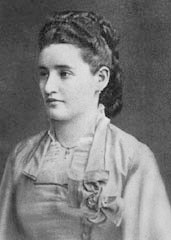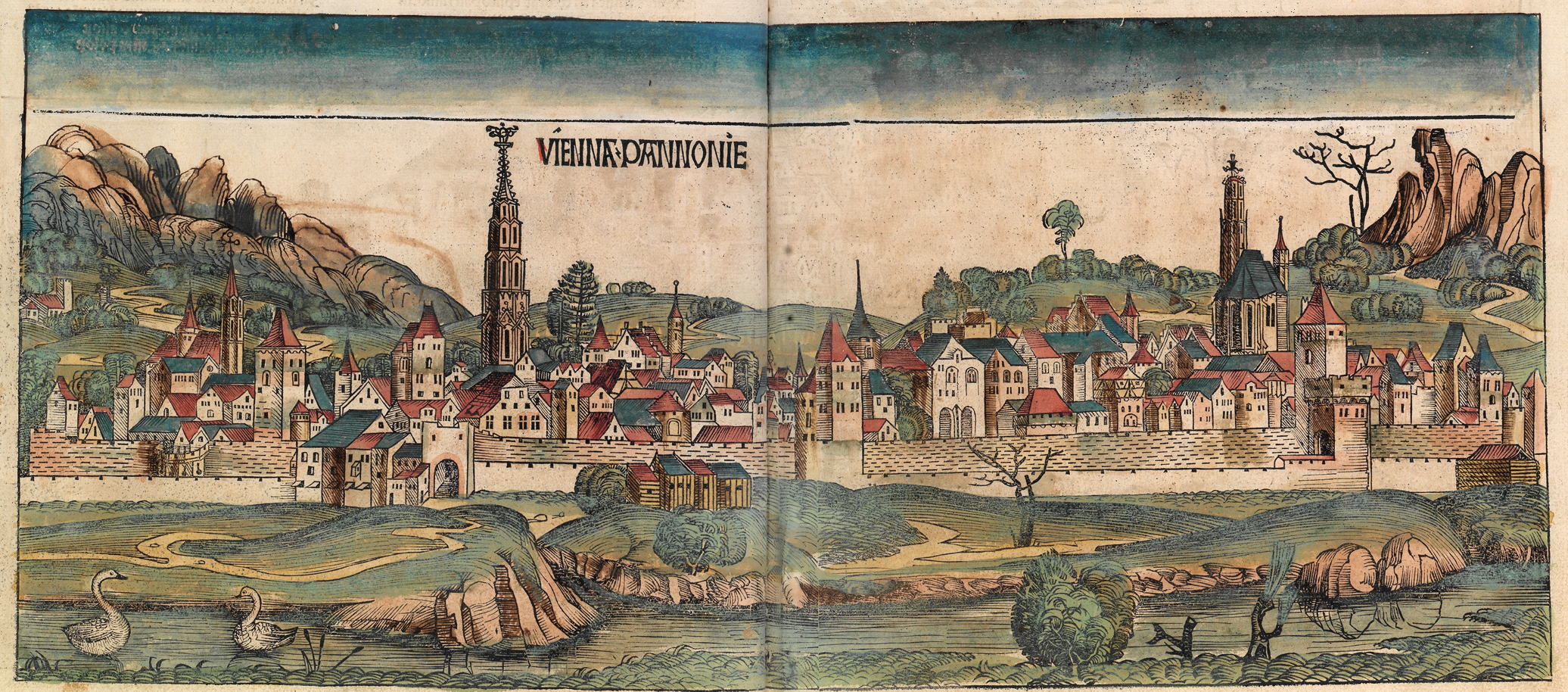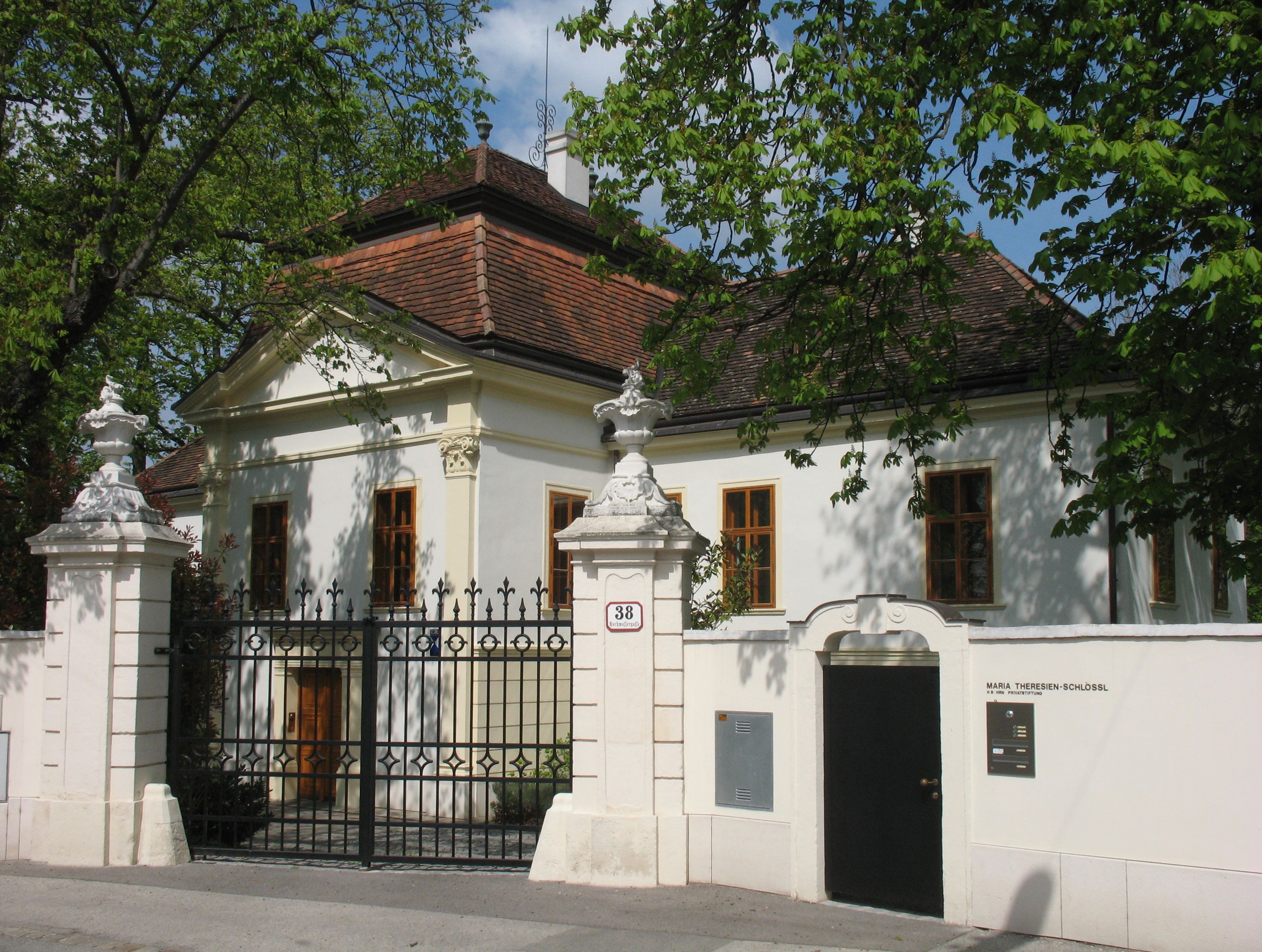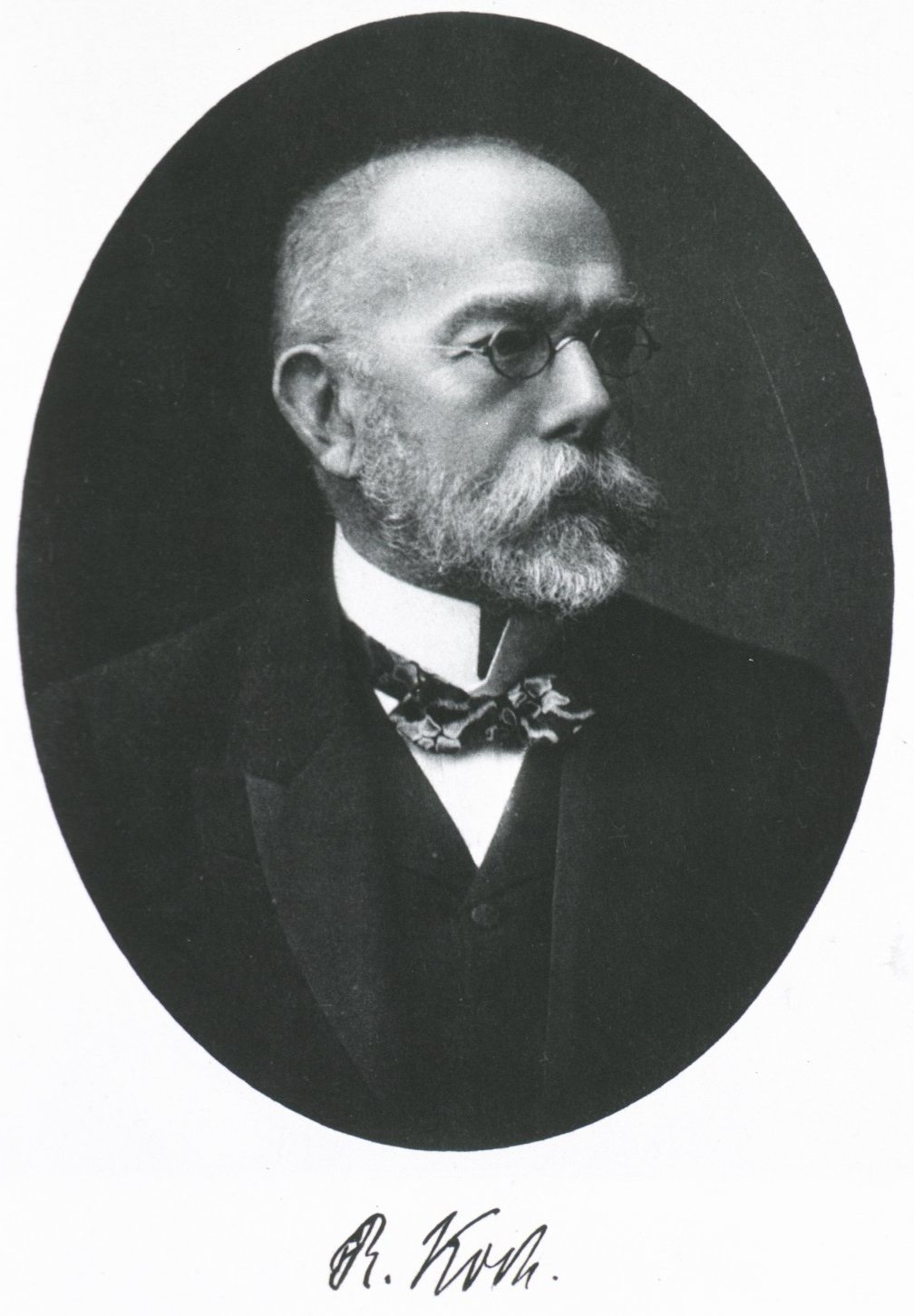|
Anna O.
Bertha Pappenheim (27 February 1859 – 28 May 1936) was an Austrian-Jewish feminist, a social pioneer, and the founder of the Jewish Women's Association (). Under the pseudonym Anna O., she was also one of Josef Breuer's best-documented patients because of Sigmund Freud's writing on Breuer's case. Childhood and youth Bertha Pappenheim was born on 27 February 1859 in Vienna, the third daughter of Recha Pappenheim and Sigmund Pappenheim. Her mother Recha, née Goldschmidt (1830–1905), was from an old and wealthy family in Frankfurt am Main. Her father Sigmund (1824–1881), a merchant, the son of an Orthodox Jewish family from , Austria-Hungary (today's Bratislava, Slovakia), was the cofounder of the Orthodox Schiffschul in Vienna; the family name alludes to the Franconian town of Pappenheim. As "just another daughter" in a strictly traditional Jewish household, Bertha was conscious that her parents would have preferred a male child. Her parents' families held tradition ... [...More Info...] [...Related Items...] OR: [Wikipedia] [Google] [Baidu] |
Vienna
Vienna ( ; ; ) is the capital city, capital, List of largest cities in Austria, most populous city, and one of Federal states of Austria, nine federal states of Austria. It is Austria's primate city, with just over two million inhabitants. Its larger metropolitan area has a population of nearly 2.9 million, representing nearly one-third of the country's population. Vienna is the Culture of Austria, cultural, Economy of Austria, economic, and Politics of Austria, political center of the country, the List of cities in the European Union by population within city limits, fifth-largest city by population in the European Union, and the most-populous of the List of cities and towns on the river Danube, cities on the river Danube. The city lies on the eastern edge of the Vienna Woods (''Wienerwald''), the northeasternmost foothills of the Alps, that separate Vienna from the more western parts of Austria, at the transition to the Pannonian Basin. It sits on the Danube, and is ... [...More Info...] [...Related Items...] OR: [Wikipedia] [Google] [Baidu] |
Jewish Views On Marriage
Marriage in Judaism is the documentation of a contract between a Jewish man and a Jewish woman. Because marriage under Jewish law is essentially a private contractual agreement between a man and a woman, it does not require the presence of a rabbi or any other religious official. It is common, however, for rabbis to officiate and there are rules governing the process of betrothal and consecration. Non-Orthodox developments have brought changes in who may marry whom. Intermarriage is often discouraged, though opinions vary. In Judaism, a marriage can end either because of a divorce document given by the man to his wife, or by the death of either party. Certain details, primarily as protections for the wife, were added in Talmudic times. Overview Historic view In traditional Judaism, marriage is viewed as a contractual bond commanded by God in which a Jewish man and a Jewish woman come together to create a relationship in which God is directly involved. Though procreation is ... [...More Info...] [...Related Items...] OR: [Wikipedia] [Google] [Baidu] |
Hysteria
Hysteria is a term used to mean ungovernable emotional excess and can refer to a temporary state of mind or emotion. In the nineteenth century, female hysteria was considered a diagnosable physical illness in women. It is assumed that the basis for diagnosis operated under the belief that women are predisposed to mental and behavioral conditions; an interpretation of sex-related differences in stress responses. In the twentieth century, it shifted to being considered a mental illness. Influential physicians the likes of Sigmund Freud and Jean-Martin Charcot had dedicated research to hysteria patients. Currently, most physicians do not accept hysteria as a medical diagnosis. The blanket diagnosis of hysteria has been fragmented into myriad medical categories such as epilepsy, histrionic personality disorder, conversion disorders, dissociative disorders, or other medical conditions. Furthermore, lifestyle choices, such as choosing not to wed, are no longer considered symptom ... [...More Info...] [...Related Items...] OR: [Wikipedia] [Google] [Baidu] |
Studies On Hysteria
''Studies on Hysteria'' () is an 1895 book by Sigmund Freud, the founder of psychoanalysis, and the physician Josef Breuer. It consists of a joint introductory paper (reprinted from 1893); followed by five individual studies of hysterics – Breuer's famous case of Anna O. (real name: Bertha Pappenheim), seminal for the development of psychoanalysis, and four more by Freud— including his evaluation of Emmy von N— and finishing with a theoretical essay by Breuer and a more practice-oriented one on therapy by Freud. Summary Freud sees symptomology as stratified in an almost geological way, with the outermost strata being easily remembered and accepted, while “the deeper one goes the more difficult it is to recognize the recollections that are surfacing”. Reception and influence Breuer's work with Bertha Pappenheim provided the founding impetus for psychoanalysis, as Freud himself would acknowledge. In their preliminary (1893) paper, both men agreed that “the hysteric ... [...More Info...] [...Related Items...] OR: [Wikipedia] [Google] [Baidu] |
Pseudonym
A pseudonym (; ) or alias () is a fictitious name that a person assumes for a particular purpose, which differs from their original or true meaning ( orthonym). This also differs from a new name that entirely or legally replaces an individual's own. Many pseudonym holders use them because they wish to remain anonymous and maintain privacy, though this may be difficult to achieve as a result of legal issues. Scope Pseudonyms include stage names, user names, ring names, pen names, aliases, superhero or villain identities and code names, gamertags, and regnal names of emperors, popes, and other monarchs. In some cases, it may also include nicknames. Historically, they have sometimes taken the form of anagrams, Graecisms, and Latinisations. Pseudonyms should not be confused with new names that replace old ones and become the individual's full-time name. Pseudonyms are "part-time" names, used only in certain contexts: to provide a more clear-cut separation between one's privat ... [...More Info...] [...Related Items...] OR: [Wikipedia] [Google] [Baidu] |
Anna O
Bertha Pappenheim (27 February 1859 – 28 May 1936) was an Austrian-Jewish feminist, a social pioneer, and the founder of the Jewish Women's Association (). Under the pseudonym Anna O., she was also one of Josef Breuer's best-documented patients because of Sigmund Freud's writing on Breuer's case. Childhood and youth Bertha Pappenheim was born on 27 February 1859 in Vienna, the third daughter of Recha Pappenheim and Sigmund Pappenheim. Her mother Recha, née Goldschmidt (1830–1905), was from an old and wealthy family in Frankfurt am Main. Her father Sigmund (1824–1881), a merchant, the son of an Orthodox Jewish family from , Austria-Hungary (today's Bratislava, Slovakia), was the cofounder of the Orthodox Schiffschul in Vienna; the family name alludes to the Franconian town of Pappenheim. As "just another daughter" in a strictly traditional Jewish household, Bertha was conscious that her parents would have preferred a male child. Her parents' families held tradition ... [...More Info...] [...Related Items...] OR: [Wikipedia] [Google] [Baidu] |
Inzersdorf (Vienna)
Inzersdorf (; before 1893 Inzersdorf am Wienerberge, between 1893 and 1938 Inzersdorf bei Wien; Central Bavarian: ''Inzasduaf'') was before 1938 an independent municipality, and is now a part of the 23rd Viennese district Liesing. Today, the cadastral commune Inzersdorf has got an area of and is so on the biggest part of the district. But in the 19th century, independent Inzersdorf had also got place in the today 10th Viennese district, and bordered on the villages Vösendorf, Leopoldsdorf, Oberlaa, Ober‑ and Unterlaa, and (in the west) on Erlaa (Vienna), Erlaa. Geography The village is located in a flat marsh, thus a lot of clay was deposited in the area by the Liesing (Schwechat), Liesing River. That was the basis for 19th-century brickworks, whose mining holes remain until today as lakes. Geologically spoken, most parts of Inzersdorf are built on rubble from Pleistocene. In the southeast and west of the village, quaternary loam exists. The north is counted among the geo ... [...More Info...] [...Related Items...] OR: [Wikipedia] [Google] [Baidu] |
Kosher
(also or , ) is a set of dietary laws dealing with the foods that Jewish people are permitted to eat and how those foods must be prepared according to Jewish law. Food that may be consumed is deemed kosher ( in English, ), from the Ashkenazi pronunciation of the term that in Sephardi or Modern Hebrew is pronounced ''kashér'' (), meaning "fit" (in this context: "fit for consumption"). Food that may not be consumed, however, is deemed treif ( in English, ), also spelled treyf (). In case of objects the opposite of kosher is pasúl ( in English, Yiddish: פָּסוּל). Although the details of the laws of are numerous and complex, they rest on a few basic principles: * Only certain types of mammals, birds, and fish, meeting specific criteria are kosher; the consumption of the flesh of any animals that do not meet these criteria, such as pork, frogs, and shellfish, is forbidden, except for locusts, which are the only kosher invertebrate. * The most basic eating rule in ... [...More Info...] [...Related Items...] OR: [Wikipedia] [Google] [Baidu] |
Needlework
Needlework refers to decorative sewing and other textile arts, textile handicrafts that involve the use of a Sewing needle, needle. Needlework may also include related textile crafts like crochet (which uses a crochet hook, hook), or tatting, (which uses a shuttle (weaving), shuttle). Similar abilities often transfer well between different varieties of needlework, such as fine motor skill and knowledge of textile fibers. Some of the same tools may be used in several different varieties of needlework. Background Needlework was an important fact of women's identity during the Victorian age, including embroidery, Net (textile), netting, knitting, crochet, and Berlin wool work. A growing middle class had more leisure time than ever before; printed materials offered homemakers thousands of patterns. Women were still limited to roles in the household, and under the standards of the time a woman working on needle work while entertaining the parlor was considered beautiful. Accordin ... [...More Info...] [...Related Items...] OR: [Wikipedia] [Google] [Baidu] |
Alsergrund
Alsergrund (; ) is the ninth district of Vienna, Austria (). It is located just north of the first, central district, Innere Stadt. Alsergrund was incorporated in 1862, with seven suburbs. As a central district, the area is densely populated. According to the census of 2001, there were 37,816 inhabitants over 2.99 square km (1.15 sq. mi). Many departments of the University of Vienna (main university), TU Wien and the University of Natural Resources and Life Sciences (BOKU) are located in Alsergrund. Until 2013 the University of Economics and Business ( Wirtschaftsuniversität Wien) was also located in the 9th district, but eventually moved to the 2nd district. There are also many large hospitals, including the biggest in Vienna, the AKH (, "General Hospital"). Alsergrund is associated with many notable names of Viennese art and science. It is the birthplace of Romantic composer Franz Schubert. Classic music composer Ludwig van Beethoven died here in his apartment at Schwarzspan ... [...More Info...] [...Related Items...] OR: [Wikipedia] [Google] [Baidu] |
Leopoldstadt
Leopoldstadt (; ; "Leopold-Town") is the 2nd municipal district of Vienna () in Austria. there are 103,233 inhabitants over . It is situated in the heart of the city and, together with Brigittenau (20th district), forms a large island surrounded by the Danube Canal and, to the north, the Danube. It is named after Leopold I, Holy Roman Emperor. Due to its relatively high percentage of Jewish inhabitants before the Holocaust (38.5 percent in 1923), Leopoldstadt gained the nickname (' Matzo Island'). This context was a significant aspect for the district twinning with the New York City borough Brooklyn in 2007. Landmarks Places of interest include the ''Wiener Prater'' (from Latin ''pratum'' "meadow"), former imperial hunting grounds to which the public was denied access until 1766. The area of the ''Prater'' closest to the city centre contains a large amusement park, known as the ''Volksprater'' ("People's Prater") or ''Wurstelprater'' (after the Arlecchino, Harlequin-type fi ... [...More Info...] [...Related Items...] OR: [Wikipedia] [Google] [Baidu] |
Tuberculosis
Tuberculosis (TB), also known colloquially as the "white death", or historically as consumption, is a contagious disease usually caused by ''Mycobacterium tuberculosis'' (MTB) bacteria. Tuberculosis generally affects the lungs, but it can also affect other parts of the body. Most infections show no symptoms, in which case it is known as inactive or latent tuberculosis. A small proportion of latent infections progress to active disease that, if left untreated, can be fatal. Typical symptoms of active TB are chronic cough with hemoptysis, blood-containing sputum, mucus, fever, night sweats, and weight loss. Infection of other organs can cause a wide range of symptoms. Tuberculosis is Human-to-human transmission, spread from one person to the next Airborne disease, through the air when people who have active TB in their lungs cough, spit, speak, or sneeze. People with latent TB do not spread the disease. A latent infection is more likely to become active in those with weakened I ... [...More Info...] [...Related Items...] OR: [Wikipedia] [Google] [Baidu] |









